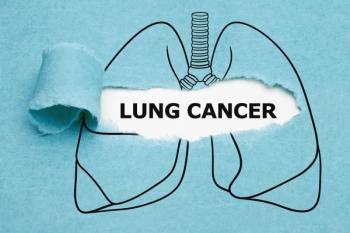
Trigger Systems Can Help Clinicians Better Serve Patients With Poor Cancer Prognosis
Two studies showed how hospital-based trigger systems could help guide patients toward appropriate goals of care and in some cases palliative care.
Although the goal of cancer care is to cure patients or extend their survival, oncologists know that a significant subset of the patients they see will not survive their illnesses. However, even when cure is not an option, clinicians face a difficult decision of knowing when to have conversations with patients about a poor prognosis or the need for palliative care.
Two new abstracts presented at the 2022 American Society of Clinical Oncology Annual Meeting described efforts to help clinicians better identify patients in need of such conversations. One dealt with systematizing the identification of patients with a poor prognosis. The other used a system of triggers with the goal of connecting more patients with palliative care at the appropriate time.
In the first report, study investigators explained how Dana-Farber Cancer Institute sought to use its oncology decision-support pathways to help flag patients
The institute asked medical oncologists to identify clinical settings that were associated with an expected median survival of less than 12 months. Those settings were then embedded into the pathway platform.
Over the course of 15 months, there were 264 navigations through the platform’s poor-prognosis nodes, representing 205 patients with lung cancer. The authors found that patients had a median overall survival (OS) of 6.4 months from their first navigation through a poor-prognosis mode, although OS times vary by cancer type, with patients with metastatic squamous non–small cell lung cancer (NSCLC) on their third line of therapy or beyond achieving a median OS of just 3.5 months following their first node, and patients with metastatic squamous NSCLC on their second line of therapy achieving a median OS of 9.0 months.
The authors said their experience shows that a clinical pathways platform can be a useful tool to identify patients facing particularly steep odds and that such systems can provide real-world evidence to bolster the predicted outcomes based on published studies.
“By embedding this into the pathways data model, we aim to alert physicians to conduct goals of care conversations, offer supportive care resources, and match patients to appropriate treatment options and clinical trials,” they wrote.
A similar effort, this time at Monmouth Medical Center, in New Jersey, wanted to increase the usage of palliative care consults and their health system.2 To do so, the investigators developed a set of triggers based on published literature to help clinicians identify patients likely to benefit from palliative care. Patients who met any one of the triggers were deemed eligible for a consultation.
The study took place over 3 months, with a 1-month pre-intervention phase at the beginning. During this phase, 93 of 121 enrolled patients were triggered, but just 12.33% of patients who did not have cancer and 30% of patients with cancer were referred for a palliative care consult. During the intervention phase,160 of 223 patients were triggered. Of those, 28.28% of patients without cancer and 62.30% of patients with cancer were referred to palliative care.
The study investigators said among the patients who received a palliative care consult, 4 of 17 full-code patients with cancer changed their status to “do not resuscitate” during the pre-intervention phase of the study, and 8 of 59 patients did the same during the intervention phase. In addition, 10 patients with cancer were discharged to home hospice care during the intervention phase; none were similarly discharged during the pre-intervention phase.
The investigators said these data show palliative care triggers can boost usage of palliative care.
“Among cancer patients, we found improvement in utilization of hospice services and clarification of their code status at discharge,” the authors said.
They added, however, that more research will be needed to better standardize these processes into the health systems’ models of care.
References
1. Jackman DM, Rice M, Virkler N, et al. Novel use of clinical pathways to identify poor prognosis lung cancer patients: implementation and outcomes. J Clin Oncol. 2022;40(suppl 16):1589-1589. doi:10.1200/jco.2022.40.16_suppl.1589
2. Singh V, Vyas C, Fichadiya H, et al. Trigger-based pathways to increase utilization of palliative care services for cancer patients: a multi-disciplinary approach. J Clin Oncol. 2022;40(suppl 16):e24007-e24007. doi:10.1200/jco.2022.40.16_suppl.e24007
Newsletter
Stay ahead of policy, cost, and value—subscribe to AJMC for expert insights at the intersection of clinical care and health economics.





























































